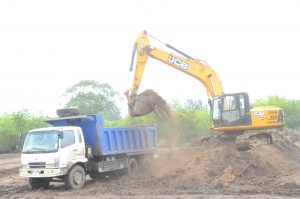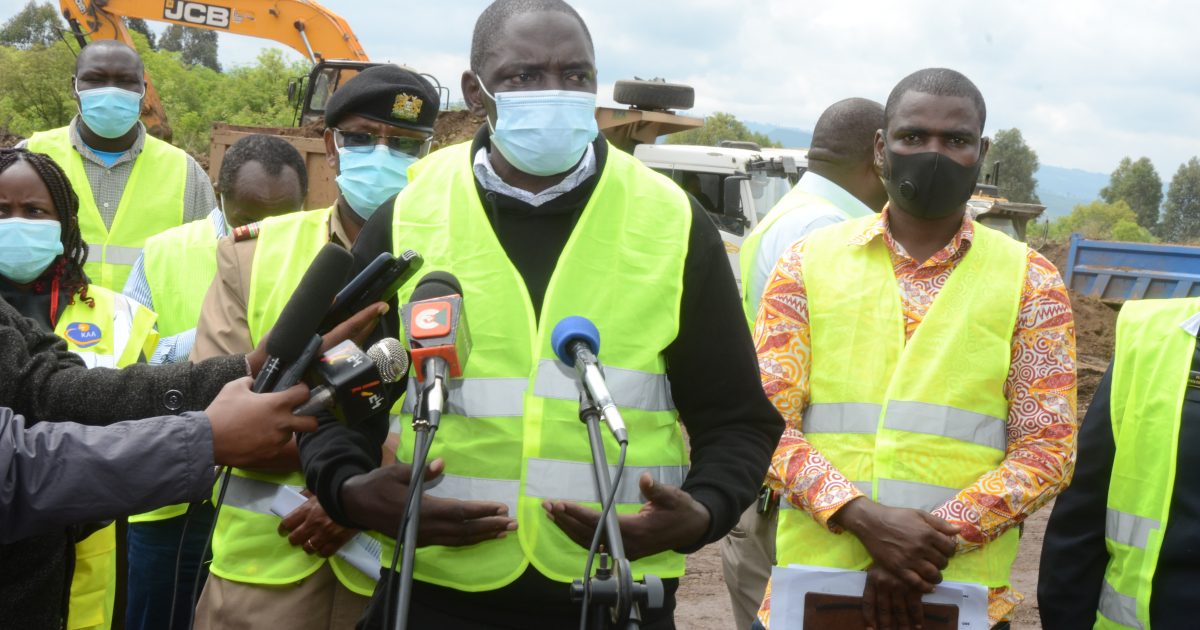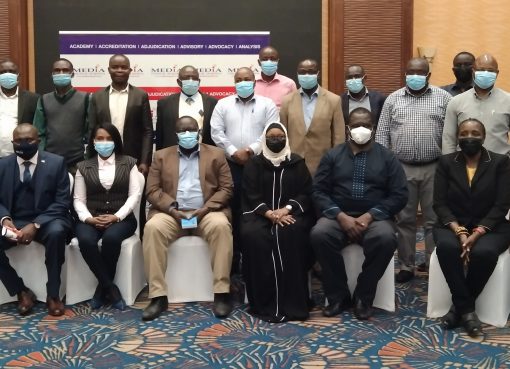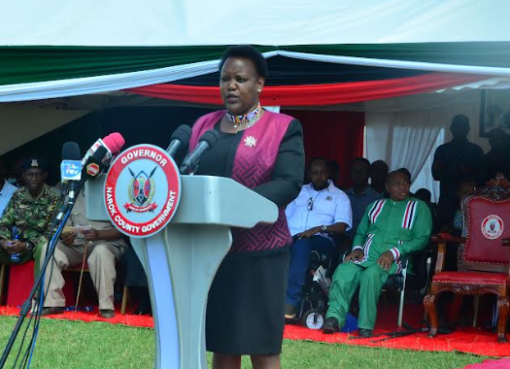Nakuru’s quest for city status has received a major boost after the National Government pumped more than Sh7 billion in an infrastructural upgrade, which includes tarmac roads and an airport.
Government Spokesperson Colonel (Retired) Cyrus Oguna said the projects will have a direct impact on the manufacturing, horticultural, tourism and hospitality sectors adding that the state was committed to making the Big Four agenda a reality.
Speaking during verification site tours of public funded projects by the President’s Delivery Unit (PDU) and County Development Implementation Coordination Committee (CDICC) in Naivasha, Gilgil, Njoro and Nakuru East Sub-Counties Colonel (Retired) Oguna stated infrastructure has been given a key focus by the government as it attracts investments in other sectors.
“The development of big and successful economies has always been connected to infrastructural expansion. Kenya needs substantial investments in its infrastructure sector to achieve growth that is not only robust, but also inclusive and impactful to the community.
Developing world-class infrastructure will add to Kenya’s existing strengths in having a young labour force, robust institutions and dynamic entrepreneurs. Building new airports, roads, power plants, ports and other infrastructures is key to spurring economic activity and unlocking opportunities in urban and rural regions across the country and the East African community at large,” he noted.

The Spokesperson who was accompanied by County Commissioner Erastus Mbui Mwenda and PDU Director in charge of Nakuru, Laikipia and Samburu Counties James Ikamati Karithi said the projects are a boost to development stimulus through reduced transport costs and travel times, reductions in vehicle operating costs and increased speeds.
He said the number of tourists visiting the devolved unit will be boosted following the Sh398 million upgrade of the Naivasha, Karagita-Kongoni Road that links up Moi South lake region which hosts dozens of camping sites and resorts.
The 30-kilometre road leads to more than 30 flower farms, the geothermal rich area of Olkaria, Kenya Electricity Generating Company (KenGen) geothermal power plants, geothermal spa and the Hells gate National Park.
The road also serves more than 60 hotels and resorts — most of them among the finest in Kenya which dot the serene Lake Naivasha shoreline.
The government has also allocated over Sh400 million in the current financial year, for the Shs3 billion airport upgrade project at the 81 Tank Battalion Barracks in Lanet project with a promise of additional funding in subsequent years.
The first phase of the project will entail upgrading the current military airstrip to an airport that will serve both the military and civilians. The facility will handle both commercial and passenger flights from across the country.
“The current airstrip will be upgraded to bitumen standards after which we shall set up two aprons and two terminal buildings; one for civilians and another for the military. A civilian access road will also be set up,” said Oguna.
He revealed that the first phase of the project had been scheduled to be undertaken within the next 18 months in preparation for the first civilian flights. “In the second phase, we shall extend the runway from the current 1.7km to 3.1km, and widen it to 30 metres. This will allow for landing of larger aircraft, which might be unable to land in Nairobi.
He said most of the projects were complete while more than 70 per cent of work had been done on remaining ones. The projects include the Sh1.5 billion-23 kilometre Gilgil- Machinery road, the Sh1.076 billion-24-kilometre-long Elementaita-Mau Narok Road. Maintenance works were also ongoing on Naivasha-Narok and Mai Mahiu-Narok roads at a cost of Sh289.9 million and Sh288 million respectively.
The strategic investments expected to turn around the County’s fortunes and bolster its revenue base come in the wake of inauguration of the dry port at Naivasha and plan to build industrial parks in Salgaa, Oserian, Kabarak and Njoro.
Engineers and surveyors have also been exploring ways of linking the Standard Gauge Railways (SGR) with the old railway at Longonot in Naivasha at the cost Sh3.663 billion.
Col (Retired) Oguna said the 65 kilometre Subukia, Lower Solai-Maili Kumi road being constructed at a cost of Sh2.4 billion was almost complete. He observed that transportation of farm produces from neighbouring counties of Narok and Kericho to Nakuru had been made easier following completion of the Sh2.9 billion-126-kilometer-long Mauche, Bombo, Olenguruone, Kiptagich-Silibwet Road.
And while the Sh1.5 billion-23 kilometre Gilgil- Machinery road was complete, works were still ongoing on the Sh1.076 billion-24-kilometre-long Elementaita-Mau Narok Road. Maintenance works were also ongoing on Naivasha-Narok and Mai Mahiu-Narok roads at a cost of Sh289.9 million and Sh288 million respectively.
Other ongoing road construction projects in Nakuru include Molo-Kibunja (Sh478 million), Salgaa-Rongai (Sh252.5 million), Subukia-Shrine (Sh241 million), Mau-Summit – Junction (Sh.199 million), Maili Kumi-Nyahururu (Sh195.3 million) and Maraigishu-Kinungi (Sh41 million) and Mang’u-Berer (Sh40 million).
Meanwhile, in addressing perennial long distance truck snarl ups along the Gilgil weighbridge, Sh186 million had been set aside to expand the 2.5-kilometre stretch. He said a contractor was also on site to rehabilitate Njoro, Elburgon-Turi Road at a cost of Sh333 million.
“The projects are definitely game changers. This is a great achievement by the national government. Tourists and travelers going to Nakuru now spend less time to their destinations compared to earlier when the journey took more hours,” he said.
Property owners are also happy with the revamped road network, saying this will attract investors. The expansion of the road network has also seen the Central Business District expanded with more traders and investors putting up high-rise buildings along the refurbished roads.
With the recent construction of the interchanges, the improved road network will also boost the movement of traffic in the town, considered the capital of Rift Valley.
By Anne Mwale




